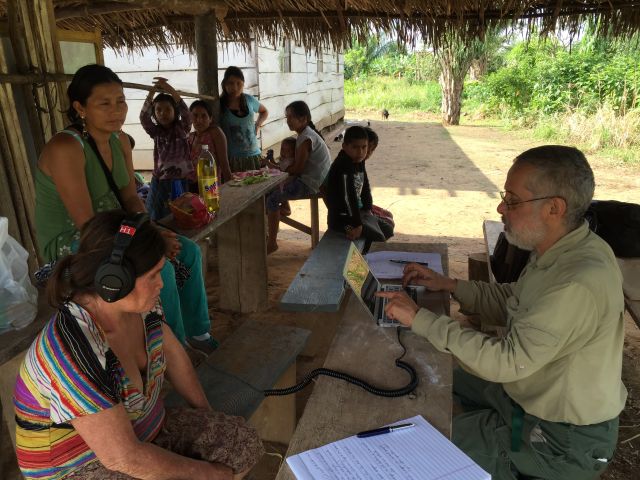Framing people’s choices differently could boost uptake, economists suggest.
If someone receives the flu vaccine, there’s a better chance they’ll get through flu season without getting sick. But because the flu vaccine isn’t 100 percent effective, they might still end up infected despite the vaccine. To most observers, these two possible outcomes are “not equally salient,” write Frederick Chen and Ryan Stevens, two economists with an interest in vaccine refusal.
When someone gets sick, it’s an adverse event. People take notice of this and use it to predict the likelihood of similar adverse events. When someone doesn’t get sick, that’s, well, nothing. It’s the absence of an event, and that's hard to recognize. “We see when the vaccine fails to protect us," write Chen and Stevens, "but when the vaccine does work, we do not see anything different from our normal state of being.”
The duo thinks that cognitive biases like these are probably playing a role in the incredibly poor uptake of flu vaccines in the US. By tailoring public health messages around known cognitive biases, the economists believe it's possible to improve vaccine uptake. At this point, we don't know whether they're right in their assumptions about the links between these particular cognitive biases and vaccine myths or whether their recommendations would work. Nonetheless, the ideas are interesting and could provide some new avenues for public health research. And given the high national costs of flu, their proposal could turn out to be particularly useful.
Most people will likely be able to recall flu vaccine failures, whether their own experiences of vaccine failure or through annoyed stories told by friends and family. They’ll be less likely to recall cases where the vaccine worked, because they're pretty much impossible to detect. So it becomes easy to overestimate how likely the vaccine is to fail and to consider it just a waste of time or money.
This way of thinking is an example of what's called an availability heuristic. It leads people to overuse recent or salient events when they’re estimating the risk of something (think about how you might involuntarily get nervous about flying straight after a huge airplane crash, even if your brain overrides your gut).
The availability heuristic also underlies more damaging myths, Chen and Stevens think. Some people believe that the flu vaccine actually causes flu, which could arise from people seeing all these visible cases of sickness following the vaccine and constructing a narrative that joins those dots in a particular way (“oh, the vaccine causes the flu!”). That in turns leads to people thinking that people who are pregnant or who have suppressed immune systems should avoid the flu vaccine.
People often don’t get the flu vaccine because they think they’re at low risk for flu. This, Chen and Stevens suggest, could be due to people’s “unrealistic optimism about themselves”—people believe themselves to be above average and think they’re great drivers, for example. They also consider themselves immune to pesky cognitive biases, as the comment thread on any article about cognitive biases will demonstrate. So, the authors write, people may “vastly underestimate their susceptibility by constructing a mental narrative that wholly attributes their influenza-free experiences thus far to their having superior health or genetics.”
Understanding how these biases drive people’s (often unconscious) decision-making processes could steer public health efforts to improve vaccine uptake. For example, campaigns could try to tell stories about people who got the vaccine and then didn’t get sick to balance out the salience of the vaccine failure stories with something more memorable than statistics. Advertisements that ask the audience to consider the vaccine choice made by a relatable person could also lead them to take a less overly optimistic, more objective stance on their own risk of flu infection.
It could also be possible to use cognitive biases to public health advantage by leveraging loss aversion. This is people’s tendency to get far more upset about things they lose than they get happy about things they gain. Because of this, saying “vaccination reduces your risk of flu by up to 80 percent” might be less effective than saying “your risk of getting the flu increases by up to 400 percent if you’re not vaccinated.”
One really important thing that Chen and Stevens don’t discuss is whether people might have different levels of resistance to flu vaccines. For instance, your average Joe might not have given flu vaccines much thought. This person could have a vague awareness that they don't work too well and that he doesn't really get sick anyway. These techniques might work on him, but they likely won't on a hardcore anti-vaxxer whose position is rooted as much in identity as anything else.
Overall, these ideas seem sensible, but the next step now is to study whether they actually work.
Health Promotion International, 2016. DOI: 10.1093/heapro/daw031 (About DOIs).







